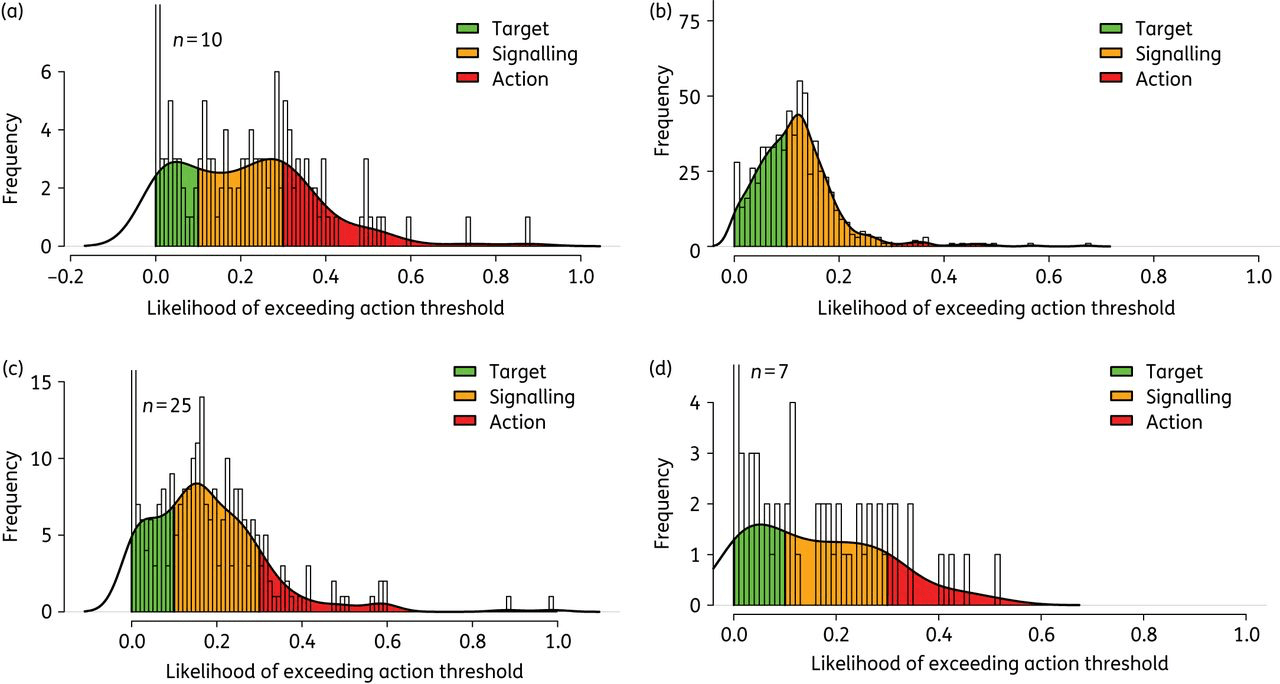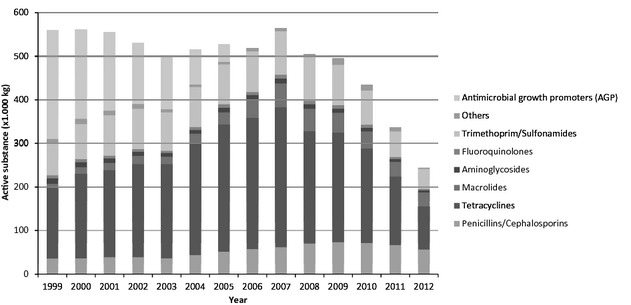
As part of antimicrobial stewardship programs, many countries, particularly those in Europe, have begun to closely monitor antimicrobial use. Some countries have begun to use this national data to provide benchmarks for farms and veterinarians, in terms of the volume of antimicrobials that they use. In order for these systems to work, it requires significant government oversight and are often possible due to the small geography of the countries as well as the size of the industries.
Below are two examples of benchmarking systems that have been employed successfully:
-
Netherlands
Due to the emergence of antimicrobial-resistant bacteria in livestock, major reduction goals for antimicrobial use were set by the government in the Netherlands in 2008. To achieve these goals, benchmark thresholds for on-farm antimicrobial use were initially introduced in 2009, where farms that were above the 50th percentile of antimicrobial use were flagged as high users, and those above the 75th percentile were placed in an “action” category. Those in the action category are obliged to make changes to their management practices in order to reduce the levels of antimicrobials being used on the individual farm. Benchmarking was also done with veterinarians, where based on their prescribing history, individual veterinarians were classified into the same categories as farmers.
Below is an example of a veterinary benchmark system5, where those highlighted in green meet the target, and those in yellow are veterinarians that are in the moderate range. Those in the red require an action to be taken to reduce their level of use.

Based on the implementation of this system, as well as other actions, the Netherlands achieved a 56% reduction in antimicrobial use in farm animals between 2007 and 20124. In addition, the use of critically important antimicrobials decreased substantially, such as 3rd and 4th generation cephalosporins and fluoroquinolones. The figure below highlights the changes with respect to total antimicrobial use and different antimicrobial classes in the Netherlands from 1999-2012.

-
Denmark
Denmark has used a similar system to the Netherlands, where they use a “Yellow Card” intervention, which targets farmers using a high amount of antimicrobials per animal. The usage thresholds are dynamic, where farmers with herds above the 80th percentile receive a Yellow Card. Once a Yellow Card is received, an order is given to reduce antimicrobial use below the threshold within 9 months. If the target is not reached, a strategy for reduction was defined by a second-party veterinarian, which could include changing protocols for vaccination or treatment, as well as other management changes.
When looking at the Danish swine industry, the use of this benchmarking or “Yellow Card” system has been very successful, with a continuous reduction in antimicrobial use from 2010 to 2017, particularly in herds with high antimicrobial consumption6. However, despite the success in reducing antimicrobial use, this program has increased operating expenses for farmers. Farmers are spending more labor hours, have additional costs for biosecurity, and have increased spending on veterinary services and feed7. For these programs to be successful for all stakeholders, they need to combine a focus on reducing antimicrobial use with economics.


